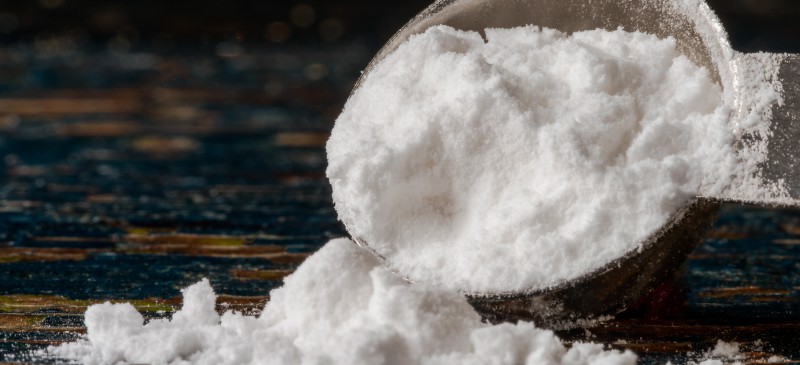
If you’re “in the know” about the latest skin care products that promise big results, you’re sure to come across alpha-hydroxy acids (AHAs). They are a group of acids that are intended to help a range of skin issues, such as dullness, acne, wrinkles and dryness. AHAs, sometimes called “fruit acids,” include malic acid, citric acid, tartaric acid and several others.
You’ll find tartaric acid, as well as other AHAs, in skin care products, including chemical exfoliants and serums. These products are considered powerful yet relatively gentle, making them a good choice for many skin types, including mildly sensitive, aging, dry, combo and acne-prone skin.
With keratolytic and astringent properties, tartaric acid helps promote skin cell turner, fights signs of aging — plus it even keeps skin hydrated and protected from effects of sun damage and pollution.
What Is Tartaric Acid?
Tartaric acid is a naturally occurring dicarboxylic acid. This means it’s an organic compound found in some plants that contains two functional carboxylic acids.
Tartaric acid belongs to the alpha hydroxy acid family, which also contains other acids used in skin care, such as:
What foods contain tartaric acid?
Tartaric acid is found naturally in a variety of plants, especially fruits that are rich in antioxidants. Among the richest sources are:
- tamarinds
- grapes
- apricots
- bananas
- citrus fruits
- dandelions
- sugar beets
- apples
Today it’s typically derived from grapes or as a byproduct from wine-making.
Other than fruits, tartaric acid is also found in wine and in cream of tartar. In fact, this ingredient is what gives wine its signature tart taste.
It’s used in winemaking because it helps prevent spoilage due to growth of bacteria and therefore acts as a preservative. It occurs naturally in wine after fermentation.
Much like with wine, in cream of tartar (potassium bitartrate), tartaric acid develops naturally during the process of fermentation. It’s added to some other foods and even some medications and supplements due to its antioxidant and preservative effects, plus for its sour, tart-tangy flavor. You’ll find it in foods/beverages, such as carbonated beverages, fruit jellies, gelatin, ice cream and baking powder.
It can be used to help improve the taste of oral medications, and some of its derivatives, such as tartar emetic, can be found in cough syrups and expectorants.
What is another name for tartaric acid?
Tartaric acid goes by several names, including dihydroxybutanedioic acid (its chemical name), L-tartaric acid and names that describe its derivatives/salts. It’s sometimes just called cream of tartar, Rochelle salt (potassium sodium tartrate, which is a mild laxative) and tartar emetic (potassium tartrate).
How else is it used?
In addition to being used in skin care and as a food preservative, additive and flavoring agent, and it is also utilized in ceramics, textiles, printing, leather tanning, metal cleaning, photography and pharmaceuticals industries due to its chemical properties.
Skin Care Benefits
What is tartaric acid used for in skin care? Here’s more about how it can make your skin smooth and full of glow:
1. Acts as a Gentle Exfoliator
Like other AHAs, tartaric acid helps naturally exfoliate the skin by removing dead skin cells from the top layer of the skin. This can help improve skin’s texture and appearance — plus it allows for other products to penetrate the skin more easily.
Some find that AHAs help even their skin’s tone, reduce bumps, brighten the skin, decrease “dullness,” and add a more even texture and tone.
READ RELATED: How to Get Rid of Dandruff: 10 Natural Remedies
Even if you typically react poorly to exfoliants, AHAs like tartaric acid are said to be suitable for almost all skin types due to their gentle effects.
2. Provides Anti-Aging Effects
Tartaric acid has antioxidant properties that offer anti-aging benefits for your skin. Just like the fruits and plants it’s sourced from, such as grapes and citrus fruits, it’s a great source of antioxidants that help protect your skin from free radical damage.
Applying AHAs, including tartaric acid, to your skin consistently can defend against cellular damage caused by factors like sunlight/UV ray damage and environmental pollution. Over time, it can decrease the appearance of dark spots, uneven skin tone, and with help from other anti-aging products wrinkles and fine lines.
3. Works Well With Moisturizers to Boost Hydration
Tartaric acid has the ability to act as a pH adjuster and product stabilizer. It helps maintain the pH range of other skin care products so they can continue to work the way that they’re intended to.
By stabilizing products’ pH levels, tartaric acid defends against irritation that can be caused by skin care acids experiencing changes in their chemical compositions.
Additionally, because it’s an exfoliant, it helps other products, including serums and moisturizers, penetrate the skin more easily to be more effective.
On its own, tartaric acid is also thought to have some moisturizing properties.
It’s broken down into tartramides. These molecules mimic ceramides that are naturally found in the skin and help keep the skin hydrated.
Tartramides are believed to help protect the skin’s lipid matrix and bind moisture to your skin, which can decrease dryness and sensitivity.
Dosage and How to Use
Look for products containing tartaric acid, such as exfoliant pads and masks, serums, and anti-aging moisturizers.
It’s common for skin care products to contain other AHAs in addition to tartaric acid, such as lactic, glycolic, and citric acids. Together these acids have widespread benefits, including smoothing and protecting the skin and minimizing the appearance of fine lines and wrinkles.
Each product containing AHAs works a bit differently, so always read directions carefully. Don’t overuse products with AHAs (usually a small application once daily is enough), because otherwise irritation may occur.
If using a product that contains multiple alpha hydroxy acids, begin with a product such as a serum, cream or lotion containing between 5% to 10% AHAs. Apply to cleansed and dried skin once per day or every other day. If you tolerate the product well, you can increase to daily use or use a higher concentration.
You can also discuss with your dermatologist doing a more concentred acid peel. A peel can be done every two to three months to help with conditions such as scarring, acne or hyperpigmentation.
Risks and Side Effects
Is tartaric acid safe? Overall, tartaric acid and other AHAs are considered gentle and safe for most people to use on their skin.
However, some with sensitive skin or allergies may still react poorly to them, especially if they are overused or combined with harsher products. This acid also shouldn’t be applied too close to the eyes because it can be irritating.
To reduce the risk for allergic reactions or skin irritation, check the full ingredient list to avoid anything you may be allergic or sensitive to, such as parabens, fragrances and diethanolamine. Stop using it if you experience redness, peeling, itching and signs of inflammation.
In high doses, tartaric acid can act like a muscle toxin, since it inhibits the production of malic acid. It’s not intended to be ingested by mouth in large amounts, so always use it as directed, and only apply it topically.
Conclusion
- Tartaric acid is a naturally occurring crystalline organic acid found in many plants, including grapes and tamarinds, as well as wine and cream of tartar.
- Tartaric acid has antioxidant properties and is an alpha hydroxy acid (AHA). AHAs are popular acids in skin care products like serums and masks.
- Due to its antioxidant and exfoliation properties, most often it’s used for reducing fine lines and wrinkles, hyperpigmentation, acne, large pores, and dull/uneven skin tone.
- It acts as a natural exfoliator and refiner because it encourages the shedding of the outer layer of skin cells. It helps promote cell turnover, improve the skins barrier and help other products, including moisturizers, penetrate the skin better.
Source: Dr. Axe





